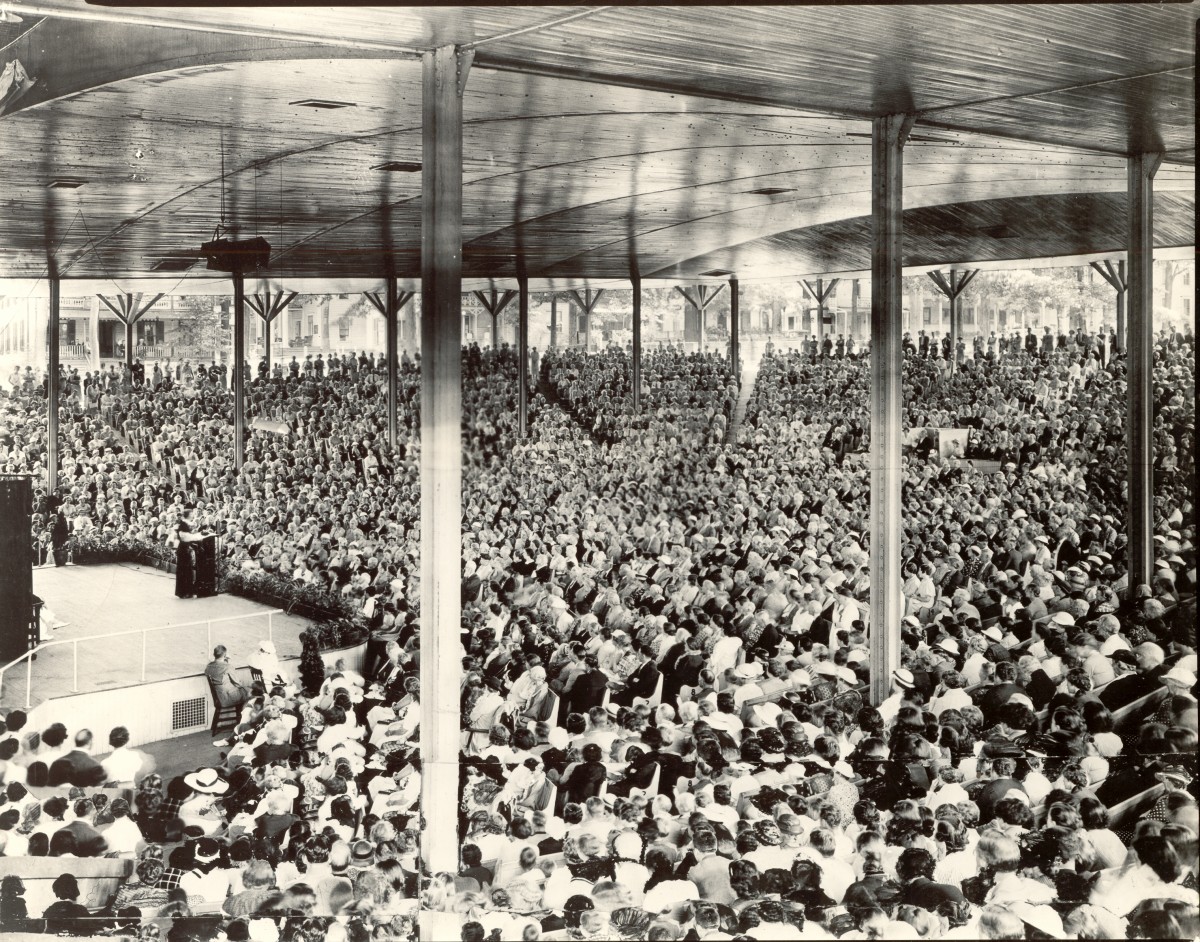The plane touched down on a viridescent sea of grass, its human cargo stepping gingerly onto the golf course, unaware of the infamy and tragedy that would befall her less than a decade later.
“All eyes were upon the young conqueror of the ocean,” The Chautauquan Daily reported in 1929.
It was July 20, 1929, when Amelia Earhart landed in her Lockheed Vega plane at the Chautauqua Golf Club — and this weekend marks the 90th anniversary of that landing.
Earhart arrived as part of a lecture circuit that followed her famous transatlantic flight in June 1928, a flight that made her the first woman to fly across the Atlantic Ocean, and which cemented her as a pivotal figure in 19th-century aeronautics.
“Stepping from the comfortably appointed plane as it came to rest on the fourteenth fairway, Miss Earhart, by her infectious smile, won her way immediately to the hearts of the crowd which had come to greet her,” the Daily reported on July 22, 1929. “Taken by auto to the home of President and Mrs. Bestor, she was cheered by the people along the route. She, with Lieutenant Stevens, the pilot, and Mr. Hutchinson, mechanic, was entertained at luncheon at the President’s home.”
From her rendezvous with Arthur Bestor, Earhart proceeded to the Amphitheater, where she spoke about her 20-hour and 40-minute, 1928 flight as a passenger across the Atlantic in the tri-motored Fokker plane, Friendship.
“As the flight of the Friendship recedes into the past, I find that I must explain exactly who I am,” she told the Amp audience. “Recently I have been congratulated several times for swimming the English Channel, and once for swimming the Atlantic Ocean.”
In fact, Earhart was working as a social worker in Boston when she got the call to fly across the Atlantic. She accepted, stipulating that she choose her own personnel and that she be allowed to do some flying herself.
“The food on the transatlantic flight consisted of oranges, coffee in a thermos bottle, malted milk tablets, and scrambled egg sandwiches,” the Daily reported. “Everything — chairs, extra life preservers, had to be thrown out to save weight.”
Eventually, after taking off from Trepassey Harbor, Newfoundland, Earhart and her flight team finally touched down near Burry Port, Wales, and tied their plane to a nearby buoy.
But perhaps most interesting about Earhart’s lecture in Chautauqua was her characterization of gender disparities in aviation.
“Considering the question of why more women do not fly, Earhart attributed the difference between men and women in aviation to the influence of the educational system, where all girls are taught domestic sciences and all boys manual training, without regard to individual aptitudes,” the Daily reported.
After American aviator Charles Lindbergh’s nonstop, solo flight across the Atlantic in 1927, Earhart became, in 1932, the second person to complete that great journey. Later in 1932, Earhart became the first woman to fly nonstop and alone across the United States — from Los Angeles to New Jersey.
Earhart’s prescient speculations on the future of air travel ended her Chautauqua speech and heralded her departure from the Institution.
“I hope that every one of you will have the privilege of flying across the Atlantic,” she said. “I myself hope to be able to do it again, not as I did, but in one of the large flying boats which will soon be making regular trips, with landing stations at convenient intervals along the route.”
“Landing stations at convenient intervals” would certainly have come in handy for Earhart in the 1937 round-the-world flight attempt that so notoriously ended in tragedy.
After Earhart’s disappearance in the Pacific eight years later, the Daily lamented the loss of its “First Lady of the Air.”







